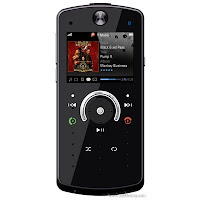Marketing Practice reader Onam Jindal asks this important question about the difference between product line extension and brand extension.
For most of the marketing students, these terms are confusing. The different definitions in the text books makes it more confusing.
Interestingly the definitions of PLE and BE are different in two editions ( 11 & 12 ) of Kotler's Marketing Management text book.
In the eleventh edition of Kotler's Marketing Management,
Product line is defined as a group of products with in a product class that are closely related because they perform similar function, are sold to the same customer groups, are marketed through the same channels, or fall within given price ranges.
Line extensions consist of introducing additional items in the same product category under the same brand name , such as new flavors, forms, color, added ingredients, package sizes etc. For example Lux soap comes in different variants like Lux Crystal Shine, Lux International etc. So when Lux comes with a new variant, it is a line extension.
Brand extension happens when a company uses its existing brand name to launch products in other categories. For example, Woodlands which is a shoe brand extends itself to readymades and accessories.
This definition has certain ambiguities because the term category can be interpreted in different ways. For example , when Lux brand is extended to Shampoos , is it a product line extension or brand extension ?
The answer is : if we take personal care as a category, then the extension is a product line extension since soap and shampoos belong to the same category. But if we take soap and shampoos as different categories, then the extension is a brand extension.
In the twelfth edition , this ambiguity is put to rest. The latest edition of Kotler & Keller 's marketing management text book defines Brand extension as follows :
When a firm uses an established brand to introduce a new product, it is called brand extension.
Brand extensions can be classified into two : Line extensions and category extensions.
Line extensions happen when the brand launches the new product in the same category targeting a new segment through new flavors, added ingredients, package sizes etc.
Category extensions happen when the parent brand is used to enter a different product category.
So according the new definition, Brand Extension becomes the umbrella concept which can be used whenever a brand uses its name to any new product. The gurus has introduced a new term category extension to replace Brand Extension in the earlier definition
So now Lux coming with a new flavor is broadly a Brand Extension and more specifically a line extension.
Woodlands extending to apparels is broadly a brand extension and more specifically a category extension.
For most of the marketing students, these terms are confusing. The different definitions in the text books makes it more confusing.
Interestingly the definitions of PLE and BE are different in two editions ( 11 & 12 ) of Kotler's Marketing Management text book.
In the eleventh edition of Kotler's Marketing Management,
Product line is defined as a group of products with in a product class that are closely related because they perform similar function, are sold to the same customer groups, are marketed through the same channels, or fall within given price ranges.
Line extensions consist of introducing additional items in the same product category under the same brand name , such as new flavors, forms, color, added ingredients, package sizes etc. For example Lux soap comes in different variants like Lux Crystal Shine, Lux International etc. So when Lux comes with a new variant, it is a line extension.
Brand extension happens when a company uses its existing brand name to launch products in other categories. For example, Woodlands which is a shoe brand extends itself to readymades and accessories.
This definition has certain ambiguities because the term category can be interpreted in different ways. For example , when Lux brand is extended to Shampoos , is it a product line extension or brand extension ?
The answer is : if we take personal care as a category, then the extension is a product line extension since soap and shampoos belong to the same category. But if we take soap and shampoos as different categories, then the extension is a brand extension.
In the twelfth edition , this ambiguity is put to rest. The latest edition of Kotler & Keller 's marketing management text book defines Brand extension as follows :
When a firm uses an established brand to introduce a new product, it is called brand extension.
Brand extensions can be classified into two : Line extensions and category extensions.
Line extensions happen when the brand launches the new product in the same category targeting a new segment through new flavors, added ingredients, package sizes etc.
Category extensions happen when the parent brand is used to enter a different product category.
So according the new definition, Brand Extension becomes the umbrella concept which can be used whenever a brand uses its name to any new product. The gurus has introduced a new term category extension to replace Brand Extension in the earlier definition
So now Lux coming with a new flavor is broadly a Brand Extension and more specifically a line extension.
Woodlands extending to apparels is broadly a brand extension and more specifically a category extension.







